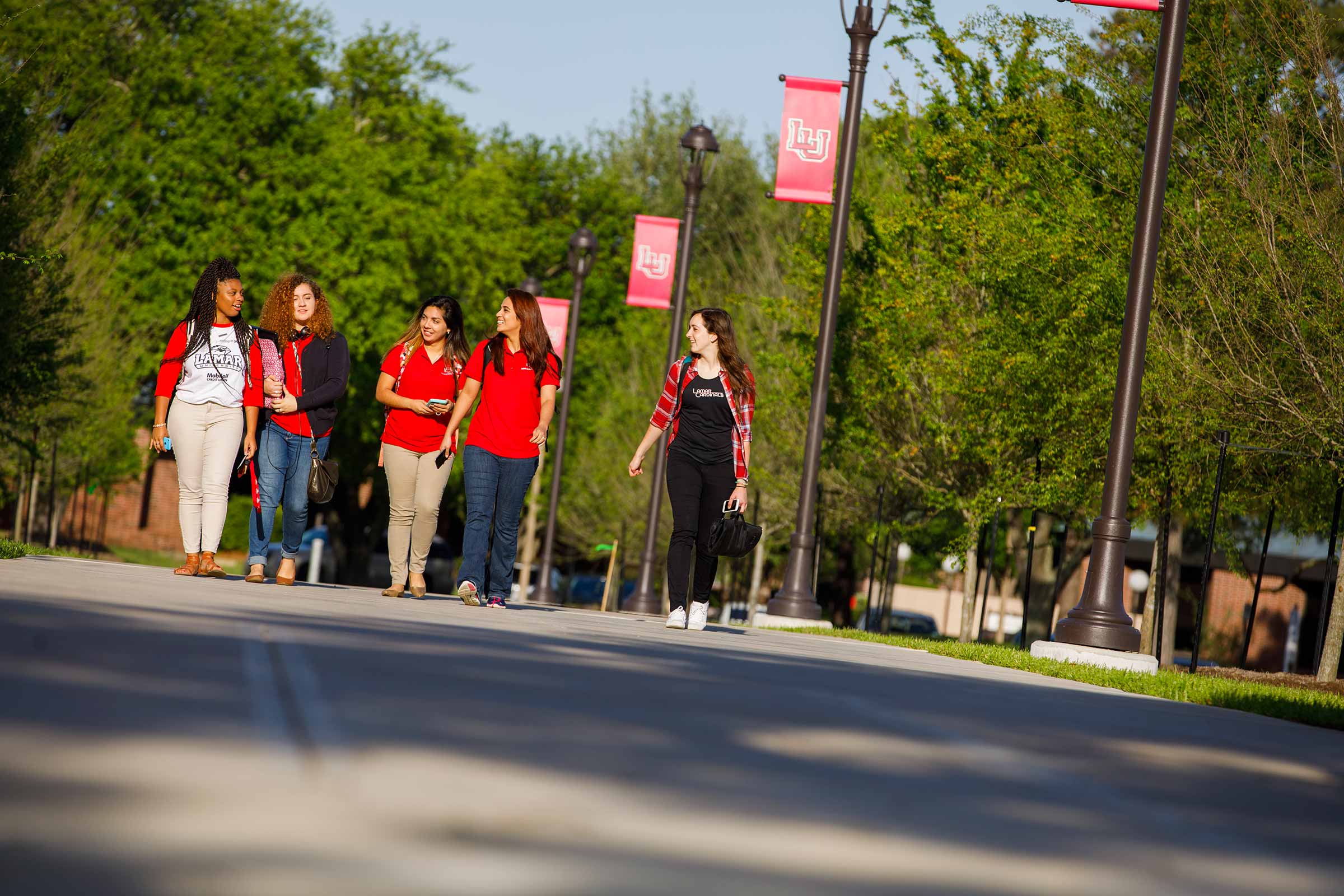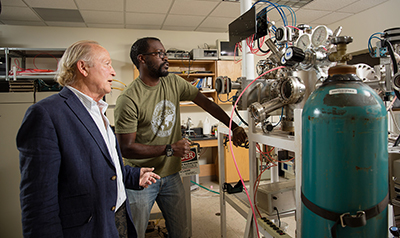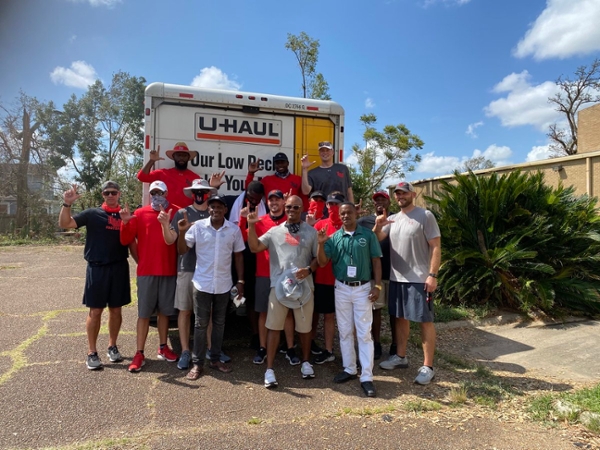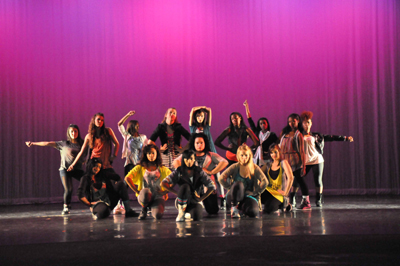Analysis reveals LU’s significant economic impact to tri-county region
January 05, 2021 | by Shelly Vitanza
Lamar University’s overall estimated annual economic impact in Jefferson, Orange and Hardin counties is approximately $246.7 million according to a demand-side economic impact analysis conducted by Hanover Research for the 2018-2019 school year.
Hanover Research conducted both demand-side and supply-side analysis to identify Lamar University’s direct, indirect and induced impact on the tri-county area. The demand-side analysis employed a regional input-output model to estimate the impact; the supply-side analysis considered three main components of impact including academic, alumni and community engagement.
input-output model to estimate the impact; the supply-side analysis considered three main components of impact including academic, alumni and community engagement.
Demand Side Key Findings
In addition to the nearly quarter of a billion dollar overall economic impact, Hanover found that LU’s externally funded spending supports 2,590.4 jobs in the area. Essentially determining that for every dollar the LU community spends in the tri-county area, there is an additional economic impact of $.48 or a total impact of $1.48.
The broader impact of all spending by LU and its students, not just expenditures funded by out-of-area sources, is higher at $608.9 million. Moreover, a total of 3,749.4 jobs are supported by all of LU’s expenditures. This impact on the area stems from direct spending by LU and its students, which totals $412.5 million, with the multiplier of $1.48.
Representing a key subset of growth output, Lamar University’s operating, capital and student spending generated an estimated $201,609,208 in labor income. This labor income value includes a direct effect of $146 million, coupled with $24.6 million in indirect effects and $30.9 million in induced effect generating an estimated $55.6 million in additional economic activity among households and businesses in the tri-county area.
Supply Side Key Findings
Academic Impact-Student Demographic
In the fall of 2019, Lamar University enrollment included 8,701 undergraduate students and 6,759 graduate students. 40% of the undergraduate students attended LU part time; 58% were female; 26% were over the age of 25; 2% were out of state; and 2% were from overseas. 43% of undergraduates were white; 24% were Black/African American; 20% were Hispanic and 5% were Asian. (Total enrollment in the Fall Semester of 2020 was far greater approaching 17,500 students; however, this economic analysis is limited to the 2018/19 timeframe.)
the Fall Semester of 2020 was far greater approaching 17,500 students; however, this economic analysis is limited to the 2018/19 timeframe.)
Academic Impact-Financial Aid
One-fifth of LU students received institutional aid. In 2018, LU’s institutional aid totaled $1,046,821 benefiting 255 students with an average of $4,105 per student.
Alumni Impact
Lamar University has more than 97,000 alumni with a third of them (27,422) living in Jefferson, Orange and Hardin counties.
Lamar University makes a significant economic contribution to the Texas economy via increased economic mobility and earnings power for its graduates. LU 2019 graduates had a median income of $53,924 - $22,690 higher than the median state salary for individuals with a high school diploma or equivalent. Graduate/professional degree holders in Texas have a median income of $72,195 – an additional $15,342 higher than the state median for a bachelor’s degree.
Based on median annual earnings for a graduate degree holder in Texas, LU’s 4,035 bachelors, masters and doctoral graduates in 2018 represented a total of $78 million in annual income state-wide.
More than half of LU’s students get a job prior to graduating and more than one-third are employed within the first quarter after graduation.
Community Engagement & Impact
Lamar University’s research activities have focused on bringing solutions to the regional needs of Southeast Texas including recovery from natural disasters such as hurricanes, regional flooding; recoveryand resiliency, to name a few. Centers established on the LU campus address specific regional research including The Center for Midstream Management and Science, The Center for Advances in Water and Air Quality, The Center for Advances in Port Management, Teas Air Research Center, Texas Hazardous Waste Research Center and the Lamar University Geospatial Center.
research including The Center for Midstream Management and Science, The Center for Advances in Water and Air Quality, The Center for Advances in Port Management, Teas Air Research Center, Texas Hazardous Waste Research Center and the Lamar University Geospatial Center.
LU has a direct impact on business through the Lamar University Center for Innovation, Commercialization and Entrepreneurship. The CICE supports clients in incubation and off site such as KLV Ventures that grew revenue from $6-$10 million, hired five additional people in Beaumont/Port Arthur and 150 people in Houston and became an Amazon Gold Partner within the last year. Other CICE incubated businesses with significant growth include XP Synergy, a workforce development company; CIMR Tech, an air sanitization company; YES Consulting, a gas station inspection business; and AtmoSpark, an atmospheric water generation business.
Since 2016 the CICE has trained more than 650 people from underserved populations (90% of them from low-to-moderate income), including underemployed, veterans and graduating seniors.
LU’s community service has a big impact on the tri-county region. In the last year, community service work focused on disaster relief efforts from hurricanes. Approximately 18 student organizations contributed more than 1,100 hours of service to the area. Additionally, LU supports the Southeast Texas community through annual community service events such as the Big Event where more than 200 students provide community service to varying agencies such as the Food Bank of South East Texas, the Beaumont Children’s Museum, YMCA, Buckner Children and Family Services and others. In 2019 LU collected and donated more than 2,000 food items for the Food Bank of South East Texas. The university received the Community Partnership Award from the food bank for its service between 2018 and 2019.
students provide community service to varying agencies such as the Food Bank of South East Texas, the Beaumont Children’s Museum, YMCA, Buckner Children and Family Services and others. In 2019 LU collected and donated more than 2,000 food items for the Food Bank of South East Texas. The university received the Community Partnership Award from the food bank for its service between 2018 and 2019.
LU provides service to the deaf community, those suffering from aphasia, and, during the pandemic, those in elder care and assisted living facilities. In 2020, LU’s Department of Speech and Hearing Sciences conducted 868 audiology visits and 2,627 speech-language pathology visits.
All five of LU’s colleges and many of its centers support workshops, seminars, lectures and/or summer camps and initiatives that engage K12 students as well as the community at large.
In addition to producing more than 100 music, dance and theater performances annually, LU’s College of Fine Arts and Communication maintains a diverse program of outreach activities in the arts. The Dishman Art Museum is an outreach facility featuring visual art and related public programming free and open to the community. KVLU is LU’s public radio.
Fine Arts and Communication maintains a diverse program of outreach activities in the arts. The Dishman Art Museum is an outreach facility featuring visual art and related public programming free and open to the community. KVLU is LU’s public radio.
Lamar University’s Spindletop Gladys City Boomtown is one of three local museums with a Traveler’s Choice Award from TripAdvisor.
Key findings are not intended to be a comprehensive list of LU’s programs and services but some notable attributes impacting the region.
Hanover Research conducted both demand-side and supply-side analysis to identify Lamar University’s direct, indirect and induced impact on the tri-county area. The demand-side analysis employed a regional
 input-output model to estimate the impact; the supply-side analysis considered three main components of impact including academic, alumni and community engagement.
input-output model to estimate the impact; the supply-side analysis considered three main components of impact including academic, alumni and community engagement. Demand Side Key Findings
In addition to the nearly quarter of a billion dollar overall economic impact, Hanover found that LU’s externally funded spending supports 2,590.4 jobs in the area. Essentially determining that for every dollar the LU community spends in the tri-county area, there is an additional economic impact of $.48 or a total impact of $1.48.
The broader impact of all spending by LU and its students, not just expenditures funded by out-of-area sources, is higher at $608.9 million. Moreover, a total of 3,749.4 jobs are supported by all of LU’s expenditures. This impact on the area stems from direct spending by LU and its students, which totals $412.5 million, with the multiplier of $1.48.
Representing a key subset of growth output, Lamar University’s operating, capital and student spending generated an estimated $201,609,208 in labor income. This labor income value includes a direct effect of $146 million, coupled with $24.6 million in indirect effects and $30.9 million in induced effect generating an estimated $55.6 million in additional economic activity among households and businesses in the tri-county area.
Supply Side Key Findings
Academic Impact-Student Demographic
In the fall of 2019, Lamar University enrollment included 8,701 undergraduate students and 6,759 graduate students. 40% of the undergraduate students attended LU part time; 58% were female; 26% were over the age of 25; 2% were out of state; and 2% were from overseas. 43% of undergraduates were white; 24% were Black/African American; 20% were Hispanic and 5% were Asian. (Total enrollment in
 the Fall Semester of 2020 was far greater approaching 17,500 students; however, this economic analysis is limited to the 2018/19 timeframe.)
the Fall Semester of 2020 was far greater approaching 17,500 students; however, this economic analysis is limited to the 2018/19 timeframe.)Academic Impact-Financial Aid
One-fifth of LU students received institutional aid. In 2018, LU’s institutional aid totaled $1,046,821 benefiting 255 students with an average of $4,105 per student.
Alumni Impact
Lamar University has more than 97,000 alumni with a third of them (27,422) living in Jefferson, Orange and Hardin counties.
Lamar University makes a significant economic contribution to the Texas economy via increased economic mobility and earnings power for its graduates. LU 2019 graduates had a median income of $53,924 - $22,690 higher than the median state salary for individuals with a high school diploma or equivalent. Graduate/professional degree holders in Texas have a median income of $72,195 – an additional $15,342 higher than the state median for a bachelor’s degree.
Based on median annual earnings for a graduate degree holder in Texas, LU’s 4,035 bachelors, masters and doctoral graduates in 2018 represented a total of $78 million in annual income state-wide.
More than half of LU’s students get a job prior to graduating and more than one-third are employed within the first quarter after graduation.
Community Engagement & Impact
Lamar University’s research activities have focused on bringing solutions to the regional needs of Southeast Texas including recovery from natural disasters such as hurricanes, regional flooding; recoveryand resiliency, to name a few. Centers established on the LU campus address specific regional
 research including The Center for Midstream Management and Science, The Center for Advances in Water and Air Quality, The Center for Advances in Port Management, Teas Air Research Center, Texas Hazardous Waste Research Center and the Lamar University Geospatial Center.
research including The Center for Midstream Management and Science, The Center for Advances in Water and Air Quality, The Center for Advances in Port Management, Teas Air Research Center, Texas Hazardous Waste Research Center and the Lamar University Geospatial Center. LU has a direct impact on business through the Lamar University Center for Innovation, Commercialization and Entrepreneurship. The CICE supports clients in incubation and off site such as KLV Ventures that grew revenue from $6-$10 million, hired five additional people in Beaumont/Port Arthur and 150 people in Houston and became an Amazon Gold Partner within the last year. Other CICE incubated businesses with significant growth include XP Synergy, a workforce development company; CIMR Tech, an air sanitization company; YES Consulting, a gas station inspection business; and AtmoSpark, an atmospheric water generation business.
Since 2016 the CICE has trained more than 650 people from underserved populations (90% of them from low-to-moderate income), including underemployed, veterans and graduating seniors.
LU’s community service has a big impact on the tri-county region. In the last year, community service work focused on disaster relief efforts from hurricanes. Approximately 18 student organizations contributed more than 1,100 hours of service to the area. Additionally, LU supports the Southeast Texas community through annual community service events such as the Big Event where more than 200
 students provide community service to varying agencies such as the Food Bank of South East Texas, the Beaumont Children’s Museum, YMCA, Buckner Children and Family Services and others. In 2019 LU collected and donated more than 2,000 food items for the Food Bank of South East Texas. The university received the Community Partnership Award from the food bank for its service between 2018 and 2019.
students provide community service to varying agencies such as the Food Bank of South East Texas, the Beaumont Children’s Museum, YMCA, Buckner Children and Family Services and others. In 2019 LU collected and donated more than 2,000 food items for the Food Bank of South East Texas. The university received the Community Partnership Award from the food bank for its service between 2018 and 2019.LU provides service to the deaf community, those suffering from aphasia, and, during the pandemic, those in elder care and assisted living facilities. In 2020, LU’s Department of Speech and Hearing Sciences conducted 868 audiology visits and 2,627 speech-language pathology visits.
All five of LU’s colleges and many of its centers support workshops, seminars, lectures and/or summer camps and initiatives that engage K12 students as well as the community at large.
In addition to producing more than 100 music, dance and theater performances annually, LU’s College of
 Fine Arts and Communication maintains a diverse program of outreach activities in the arts. The Dishman Art Museum is an outreach facility featuring visual art and related public programming free and open to the community. KVLU is LU’s public radio.
Fine Arts and Communication maintains a diverse program of outreach activities in the arts. The Dishman Art Museum is an outreach facility featuring visual art and related public programming free and open to the community. KVLU is LU’s public radio. Lamar University’s Spindletop Gladys City Boomtown is one of three local museums with a Traveler’s Choice Award from TripAdvisor.
Key findings are not intended to be a comprehensive list of LU’s programs and services but some notable attributes impacting the region.